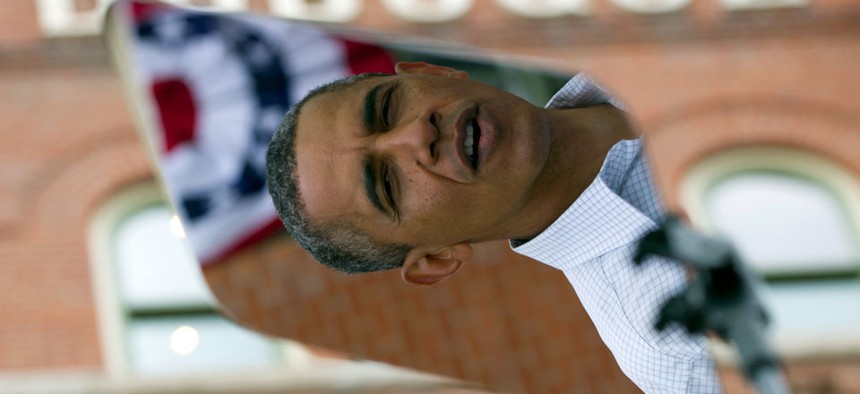
President Barack Obama is seen reflected in a TelePrompTer on stage. Carolyn Kaster/AP
Even a famous Hollywood director can flub his lines when he has no clue what he’s supposed to say.
But Michael Bay, who walked off the stage of the Consumer Electronics show this week after aborting his Samsung presentation, is not alone. Many leaders, including President Obama, rely on devices when making speeches, in part, because it allows for greater eye contact with the audience. However, speech coaches discourage their use because they can freeze or fail. “They think it will save their butt, and they [devices] will not,” said Mikki Williams who runs a speakers school for executives. Other experts say audiences can tell when a speaker is reading and it diminishes the rapport.
What works instead? Williams teaches executives to develop key words for the main sections of their talk and memorize them. Each one should trigger a story you want to share or a point you want to make. “You do have to remember your opening and your closing,” she said, comparing a great speaker to a great dancer like Fred Astaire. “You’re looking at the finished product, not all the practice and the lessons.”
Some people spend days or even weeks preparing for speech or presentation.
George Aye, founder of the Greater Good Studio, which uses design methods to solve social problems, says he practiced his TED talk 50 times before giving it to TedXDePaulU in Chicago. “Eighteen minutes is a surprisingly long time to speak when it’s from memory!” he wrote in a post on preparing for a TED Talk. “Just like any good stand-up comic knows, making it look like you’re telling a joke for the first time takes practicing it hundreds of times in advance.”






